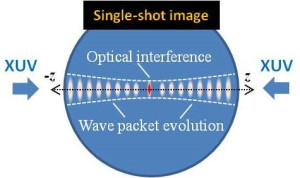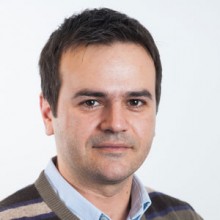 Coherent broadband XUV radiation has been extensively used over the last decades for tracing ultrafast dynamics and performing time delay spectroscopic studies of systems of the microcosm. The majority of these studies were performed using XUV-XUV or XUV-IR pump-probe schemes involving interferometers (or wave front beam splitters) for introducing a delay between the pump and the probe pulses. However, these schemes suffer from the intrinsic limitations that accompany any pump-probe arrangement. In a pump-probe experiment the evolution of the system is obtained by multiple measurements at different time delays introduced between the pump-probe pulses during which all the experimental parameters must remain constant. Additionally, a pump-probe measurement with asec resolution suffers from spectroscopic limitations due to difficulties on maintaining the experimental parameters constant for long data acquisition times and long delays between the pump-probe pulses.
Coherent broadband XUV radiation has been extensively used over the last decades for tracing ultrafast dynamics and performing time delay spectroscopic studies of systems of the microcosm. The majority of these studies were performed using XUV-XUV or XUV-IR pump-probe schemes involving interferometers (or wave front beam splitters) for introducing a delay between the pump and the probe pulses. However, these schemes suffer from the intrinsic limitations that accompany any pump-probe arrangement. In a pump-probe experiment the evolution of the system is obtained by multiple measurements at different time delays introduced between the pump-probe pulses during which all the experimental parameters must remain constant. Additionally, a pump-probe measurement with asec resolution suffers from spectroscopic limitations due to difficulties on maintaining the experimental parameters constant for long data acquisition times and long delays between the pump-probe pulses.
The aim of the research is to overcome these obstacles and develop an approach which provides "high" temporal (sub-fs) and spectral resolution (meV) in a single-shot measurement. This will be achieved by means of time gated ion microscopy approach [1-3] where an Ion Microscope with spatial resolution in the range of ≈ 1 μm will be used to record the ion distribution produced a 2-XUV-photon ionization process at the focus of two counter propagated XUV pulses. Towards this direction we will use the 20-Gwatt XUV beam line that we have recently developed at FORTH.
[1] G. Kolliopoulos et al., Phys. Rev. A 90, 013822 (2014).
[2] N. Tsatrafyllis et al., Sci. Rep. 6, 21556 (2016).
[3] P. Tzallas, et al., J. Opt. 20, 024018 (2018).



